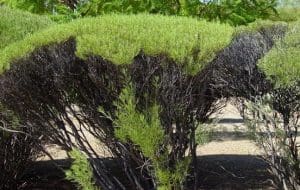Pruning is done to enhance the growth of plants and trees in your garden. When pruning, there are certain factors that need to be considered to ensure its success. Both knowledge and skills are needed to properly handle and accomplish pruning tasks.
It is important to carry out proper pruning methods to maintain plant health and improve the quality of flowers or foliage. Incorrect pruning causes damage ranging from minor to major ones, depending on the species of plants and their health at the time of pruning.
Effects of improper pruning:
- Plants are weakened or they become deformed
- Reduced food production
- Improper cuts may lead to decay or diseases
- Increased chances of wind or ice damage

Ensure proper pruning by:
- Planning and preparing before starting work
- Choosing the correct tools
- Identifying the plants and shrubs in your garden
- Pruning at the right time
- Utilising correct pruning methods
- Making clean cuts to avoid stubs that are hard to heal over
Different types of pruning methods
- Cleaning method
This is considered to be a selective kind of pruning that involves removing the dead, diseased, and broken branches or stems. By doing this, the risk of movement decay is reduced. The cleaning method is ideal for mature or established plants because there is no need to unnecessarily remove live stems.
- Reducing method
A selective pruning method that aims to decrease the height or spread of the plant. This is done to make plants look more tidy and attractive, to minimise the risk of failure, and to clear overgrowth in unneeded areas like structures and buildings. The reducing method is not ideal for all plants and shrubs, so it is important to consider the species and health of the plants.
- Thinning method
The thinning method is also considered a type of selective pruning that aims to decrease the density of live branches. It is usually done to allow air and sunlight to penetrate the inner parts of the plant. This is usually done on plants with thick foliage or ones that have a large volume of stems and leaves.
- Raising method
This is a selective pruning method that is used to provide vertical clearance for buildings, vehicles, and pedestrians. This is done by removing or reducing the lower branches of a tree or plant. The raising method is commonly used in trees near commercial buildings and residential houses.
Not all pruning practices are safe for plants. Some may do more harm than good, resulting in plant injury and death.



